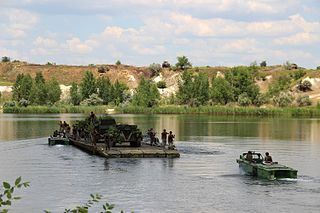
Military engineering is loosely defined as the art, science, and practice of designing and building military works and maintaining lines of military transport and military communications. Military engineers are also responsible for logistics behind military tactics. Modern military engineering differs from civil engineering. In the 20th and 21st centuries, military engineering also includes CBRN defense and other engineering disciplines such as mechanical and electrical engineering techniques.

In military operations, military reconnaissance or scouting is the exploration of an area by military forces to obtain information about enemy forces, the terrain, and civil activities in the area of operations. In military jargon, reconnaissance is abbreviated to recce and to recon, both derived from the root word reconnoitre.
A frontal assault is a military tactic which involves a direct, full-force attack on the front line of an enemy force, rather than to the flanks or rear of the enemy. It allows for a quick and decisive victory, but at the cost of subjecting the attackers to the maximum defensive power of the enemy; this can make frontal assaults costly even if successful, and often disastrously costly if unsuccessful. It may be used as a last resort when time, terrain, limited command control, or low troop quality do not allow for any battlefield flexibility. The risks of a frontal assault can be mitigated by the use of heavy supporting fire, diversionary attacks, the use of cover, or infiltration tactics.
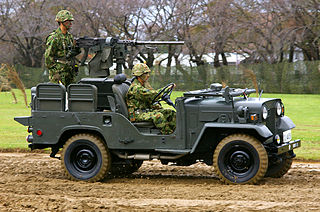
Hit-and-run tactics are a tactical doctrine of using short surprise attacks, withdrawing before the enemy can respond in force, and constantly maneuvering to avoid full engagement with the enemy. The purpose is not to decisively defeat the enemy or capture territory but to weaken enemy forces over time through raids, harassment, and skirmishing and limiting risk to friendly forces. Such tactics can also expose enemy defensive weaknesses and achieve a psychological effect on the enemy's morale.
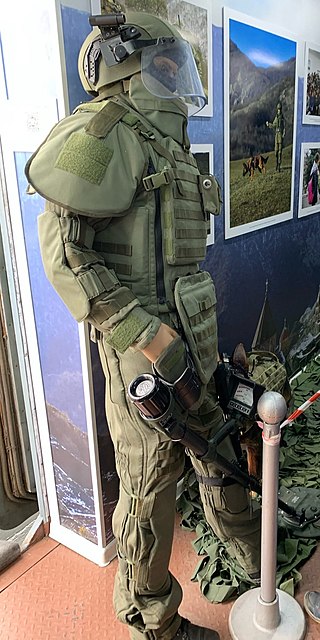
A sapper, also called a combat engineer, is a combatant or soldier who performs a variety of military engineering duties, such as breaching fortifications, demolitions, bridge-building, laying or clearing minefields, preparing field defenses, and road and airfield construction and repair.

A combat engineer is a type of soldier who performs military engineering tasks in support of land forces combat operations. Combat engineers perform a variety of military engineering, tunnel and mine warfare tasks, as well as construction and demolition duties in and out of combat zones.
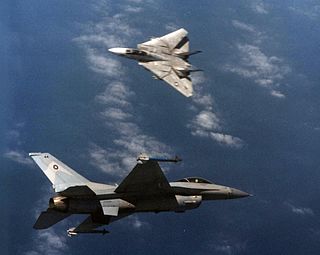
A dogfight, or dog fight, is an aerial battle between fighter aircraft conducted at close range. Modern terminology for air-to-air combat is air combat manoeuvring (ACM), which refers to tactical situations requiring the use of individual basic fighter maneuvers (BFM) to attack or evade one or more opponents. This differs from aerial warfare, which deals with the strategy involved in planning and executing various missions.
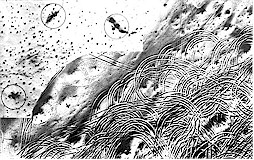
The Battle of Longewala was one of the first major engagements in the western sector during the Indo-Pakistani War of 1971, fought between assaulting Pakistani forces and Indian defenders at the Indian border post of Longewala, in the Thar Desert of Rajasthan. The battle was fought between 120 Indian soldiers accompanied by four Hunter fighter aircraft and 2,000–3,000 Pakistani soldiers accompanied by 30–40 tanks.

The United States Naval Special Warfare Command (USNSWC), also known as, is the naval component of United States Special Operations Command, the unified command responsible for overseeing and conducting the nation's special operations and missions.

Desert warfare is warfare in deserts or similar arid or semi-arid environments. The term encompasses military operations affected by the terrain, climate, and resource availability of these areas, as well as the strategies and tactics used by military forces in these situations and environments.
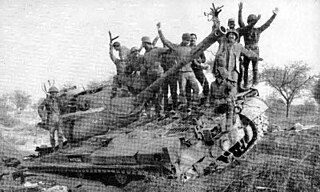
The Battle of Basantar, also known as the Battle of Shakargarh or Battle of Barapind, was one of the vital battles fought as part of the Indo-Pakistani War of 1971 in the western sector of India. The Indian troops won a hard-fought battle that secured this area in the Punjab/Jammu sector. The name Battle of Basantar actually encompasses the entire gamut of battles and skirmishes fought in the Shakargarh sector.
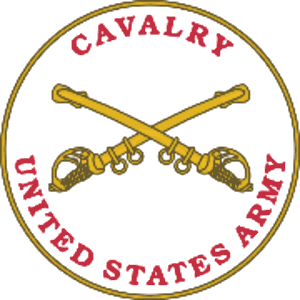
Cavalry Scout is the job title of someone who has achieved the military occupational specialty of 19D Armored Reconnaissance Specialist in the Combat Arms branch of the United States Army. As with all enlisted soldiers in the United States Cavalry, the person holding the Scout specialization will still be referred to as a "Trooper", the traditional colloquialism denoted in the cavalry's Order of the Spur.

Special reconnaissance (SR) is conducted by small units, such as a recon team, made up of highly trained military personnel, usually from special forces units and/or military intelligence organizations. Special reconnaissance teams operate behind enemy lines, avoiding direct combat and detection by the enemy. As a role, SR is distinct from commando operations, but both are often carried out by the same units. The SR role frequently includes covert direction of airstrikes and indirect fire, in areas deep behind enemy lines, placement of remotely monitored sensors, and preparations for other special forces. Like other special forces, SR units may also carry out direct action and unconventional warfare, including guerrilla operations.
The types of military forces in the Napoleonic Wars represented the unique tactical use of distinct military units, or their origin within different European regions. By and large the military forces during the period had not changed significantly from those of the 18th century, although their employment would differ significantly.
Route Reconnaissance is the investigation of the operational environment in reconnaissance operations of routes for military use, including methods of reconnoitering and classifying them for other troops. In a k during ll the primary purpose of conducting route reconnaissance is to find and report all enemy forces that can interfere with movement along a route, and to identify the limit of direct-fire range and terrain that dominates the route.
Obstacles to troop movement represent either natural, human habitat originated, constructed, concealed obstacles, or obstructive impediments to movement of military troops and their vehicles, or to their visibility. By impeding strategic, operational or tactical manoeuvre, the obstacle represents an added barrier between opposing combat forces, and therefore prevent achievement of objectives and goals specified in the operational planning schedule. The constructed obstacles are used as an aid to defending a position or area as part of the general defensive plan of the commander. The obstacles that originate from the human habitat can be converted by troops into constructed obstacles by either performing additional construction, or executing demolitions to obstruct movement over the transport network, to create a choke point, or to deny traversing of an area to the enemy. The natural obstacles can be used defensively by securing a more difficult to breach defensive position by for example securing a flank on terrain that is deemed impossible to traverse, thus denying the enemy an ability to close into combat range of direct fire weapons.

Special forces or special operations forces (SOF) are military units trained to conduct special operations. NATO has defined special operations as "military activities conducted by specially designated, organized, selected, trained and equipped forces using unconventional techniques and modes of employment".

The School of Engineers is part of the South African Army Engineer Formation, which provides combat engineering corps training and teaching to military officers and personnel as well as other Military Schools throughout the South African National Defence Force. They are currently the only Military School in Southern Africa to formally present IEDD.













